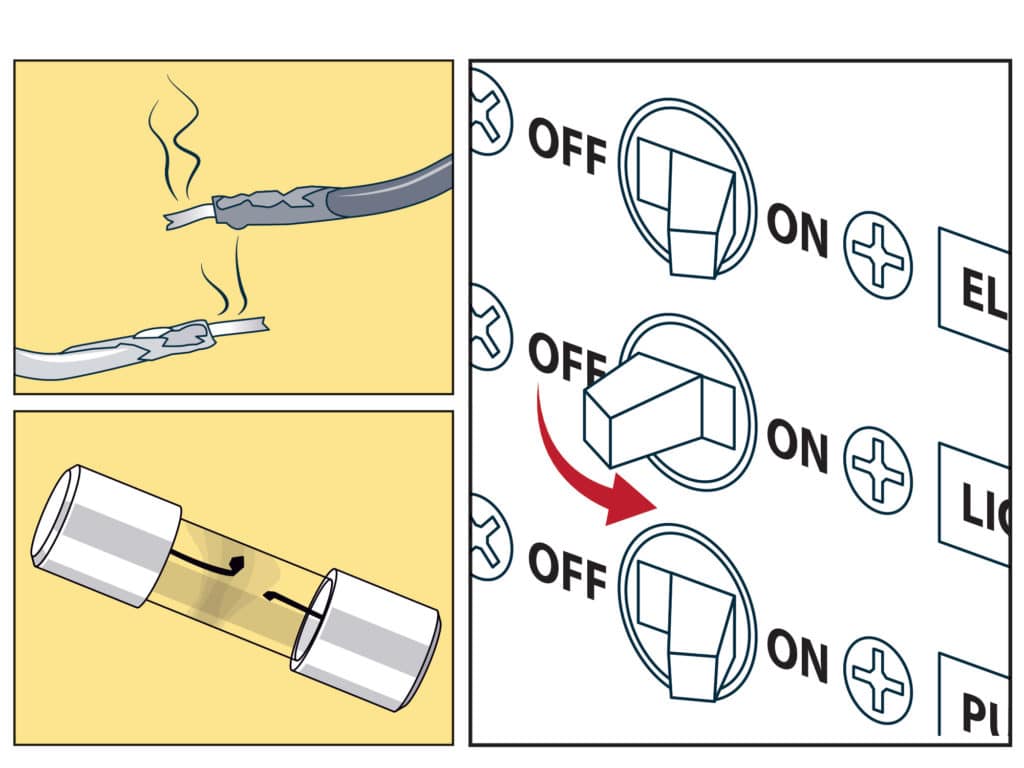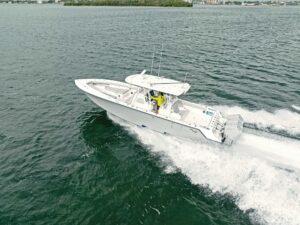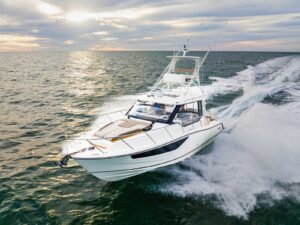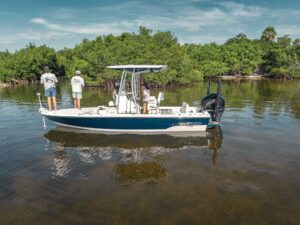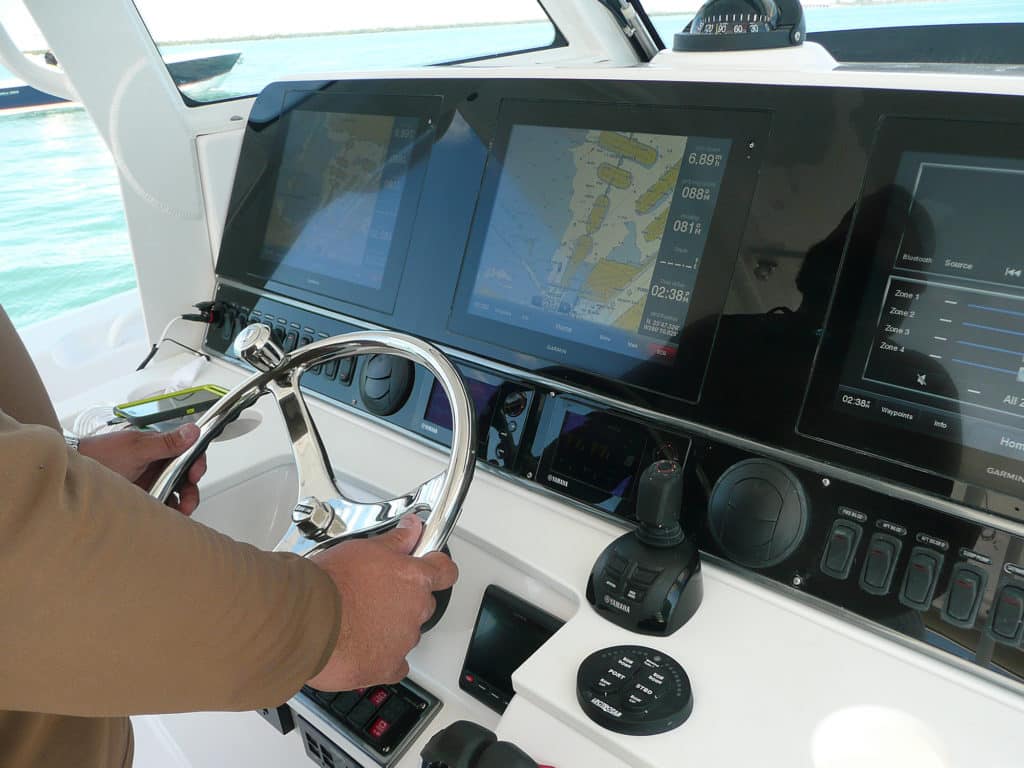
The ocean is unpredictable and challenging at times. Regardless of whether you are an old salt or an enthusiastic novice, the ability to counteract the unexpected lessens stress and aggravation. In that vein, here are seven key skills every boating angler should have in their arsenals.
How to Navigate a Boat in Shallow Water
Even in a flats skiff, you never want to run hard aground. Damage to the boat or the ecosystem is the inevitable result. You avoid mishap by reading the water correctly. Watch for ripples caused by wind butting up against the bottom contour or flowing over oyster bars or rock. Shallow water is frequently smooth compared to surrounding depths. Look for color-change contrast too. Dark areas adjacent to light sandy bottoms are often sea grasses. Brown water surrounded by blues or dark green is probably mud, sand or shell shoals. Scan the chart plotter regularly to identify potential hazards well in advance.
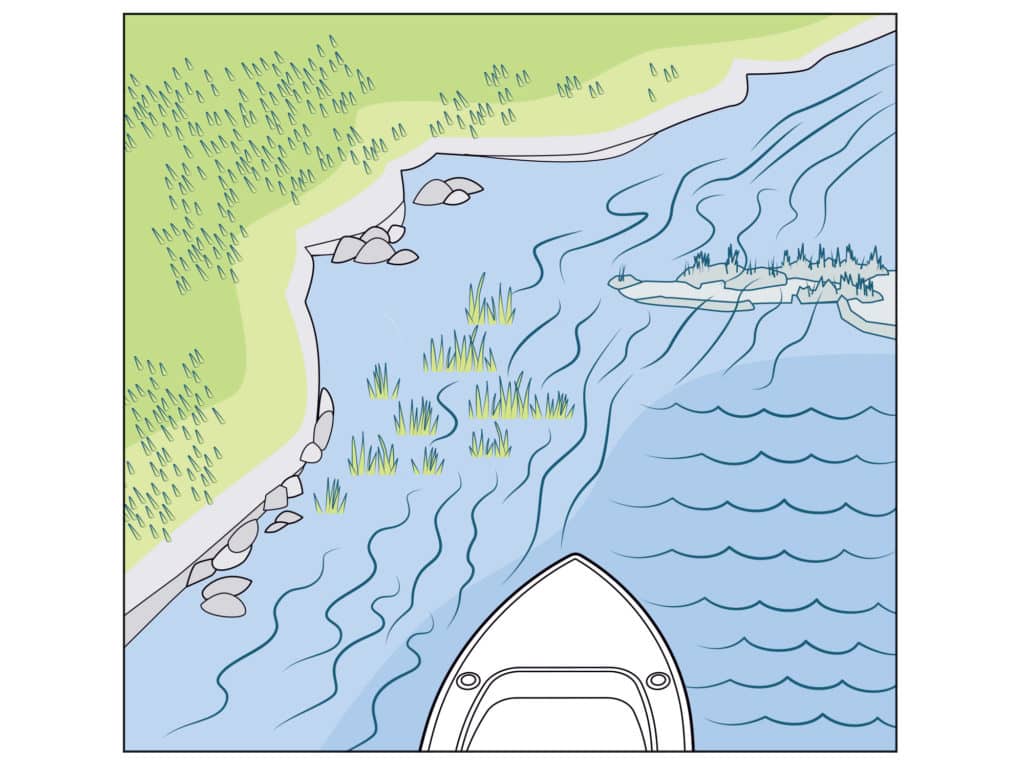
How to Change a Trailer Hub
It’s best to purchase a complete hub assembly prepacked with grease to carry in the tow vehicle. If you have a hub failure, slowly pull off the road, A. jack the trailer, remove the wheel, and position it under the trailer frame as a safety block. Remove the damaged hub, inspect the axle spindle for scarring or grooves, and clean it thoroughly. B. Gently slide on the new hub and tighten until the bearings seat. Then loosen the hub by hand until it spins freely without play. C. Tighten the castle nut slightly to align the hole for the locking cotter pin.
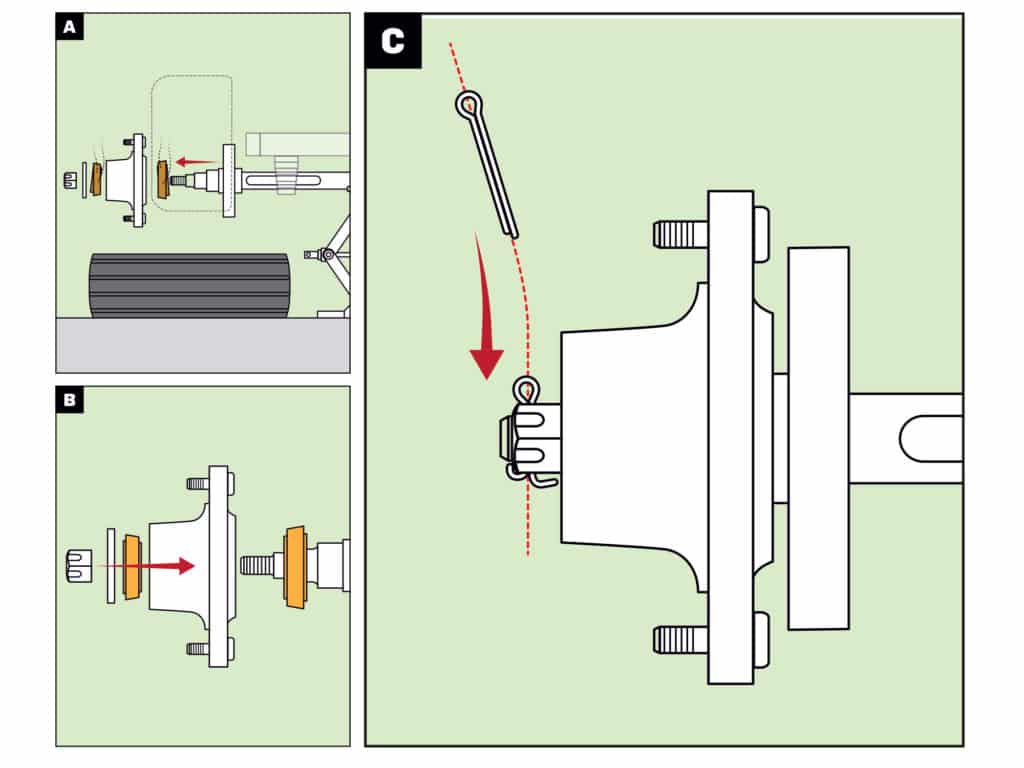
How to Make a Mayday Call with VHF Radio
Only make a Mayday call in case of immediate danger. Switch your VHF radio to Channel 16 and broadcast clearly: “Mayday, Mayday, Mayday. This is the private boat Reel Fishy, Reel Fishy, Reel Fishy.” Release the microphone and wait for a reply. The U.S. Coast Guard or other responders will confirm your identification, location, type of emergency, number of crew on board, boat description and the kind of assistance needed. Be ready with answers. If you’re forced into a life raft or the water, take the EPIRB. If you don’t have one, lock the VHF mic on to enable searching vessels or aircraft to home in on the signal. Remember, seconds and steady nerves count.
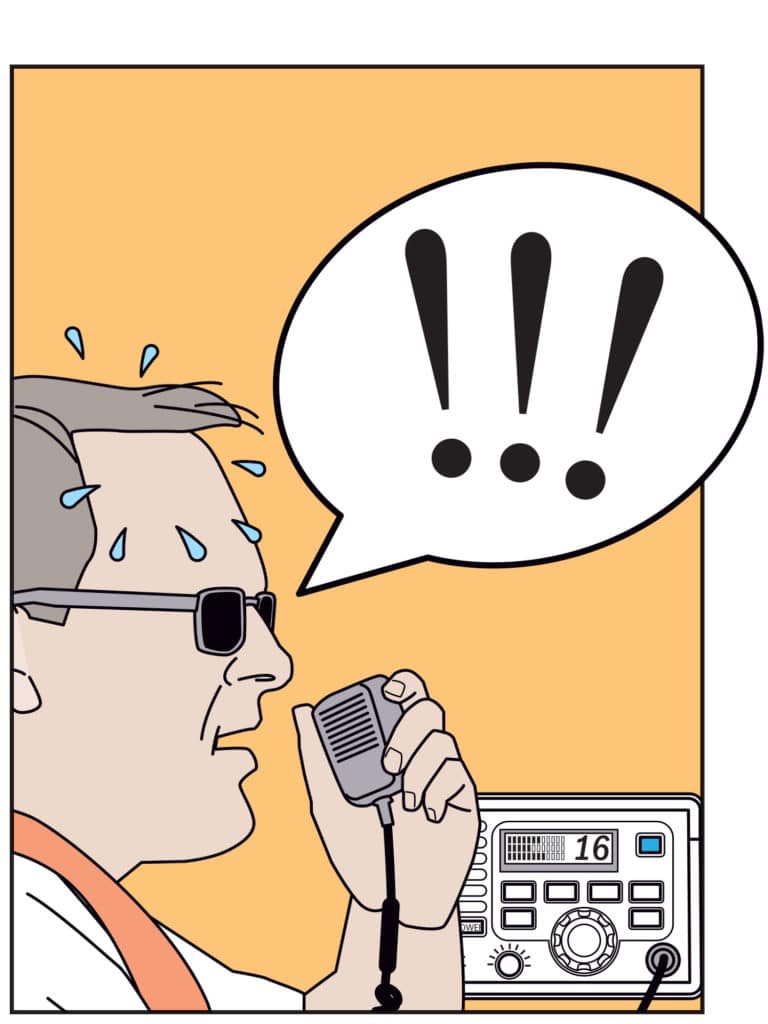
How to Navigate a Boat by Dead Reckoning
If your chart plotter and the backup go out, a paper chart and a compass enable you to find your way home. Mariners navigated the globe by dead reckoning long before the advent of GPS. Using speed measured in knots, distance in nautical miles and time measured in minutes, you can plot your present position or project a future one from a previously known spot or fix. Accuracy depends on the frequency of fixes and compensation for wind and current.
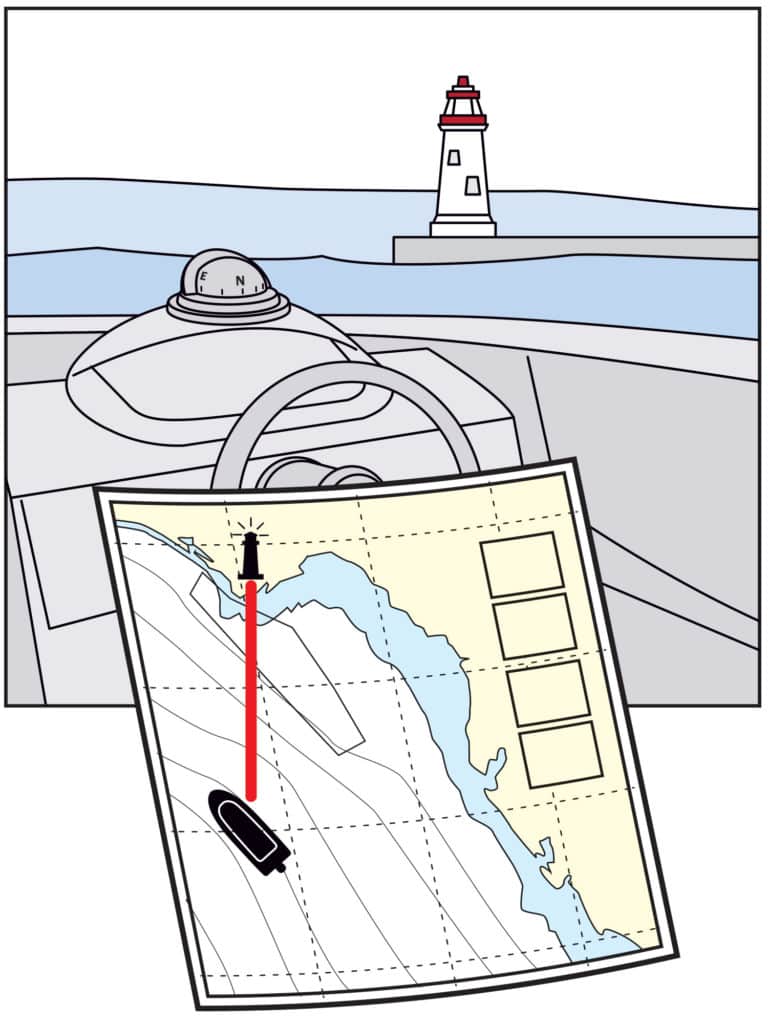
How to Navigate in Inlets Safely
Every inlet is different, and knowing the tides and surrounding shoals is the key to safely navigating them. An outgoing tide against an incoming wind often kicks up serious waves in a hurry. The depth of the inlet dictates the severity. If there’s enough water, running outside the channel markers usually smooths out the ride. But first, trim your engines up, and make sure everyone is secure and wearing safety gear. Maintain your line of travel until you’re well out to sea before making any turns. Once you commit, keep on going. Stop and you could stuff the bow or get turned broadside to big waves.
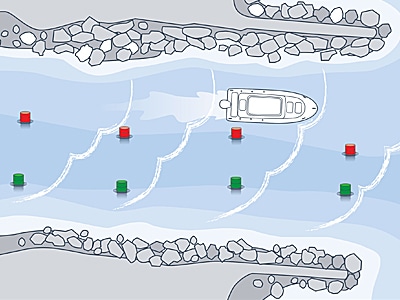
How to Tie off at a Dock
Chapman Piloting, the primer for seamanship, recommends using four mooring lines for most recreational boats. Cross the after-bow spring line A. with the forward-quarter spring, B. and tie off to separate pilings or cleats, if available. Wrap the lines around the cleats in the opposite direction of the current so they’ll be easy to remove. The bow line C. and stern line D. should be approximately 45 degrees from the dock. Adjust the line lengths to allow for tidal rise and fall. When tying to a piling, make two loops around to keep the line from pulling off. If two lines occupy the same piling, thread the lower line through the eye splice of the upper one to remove it.
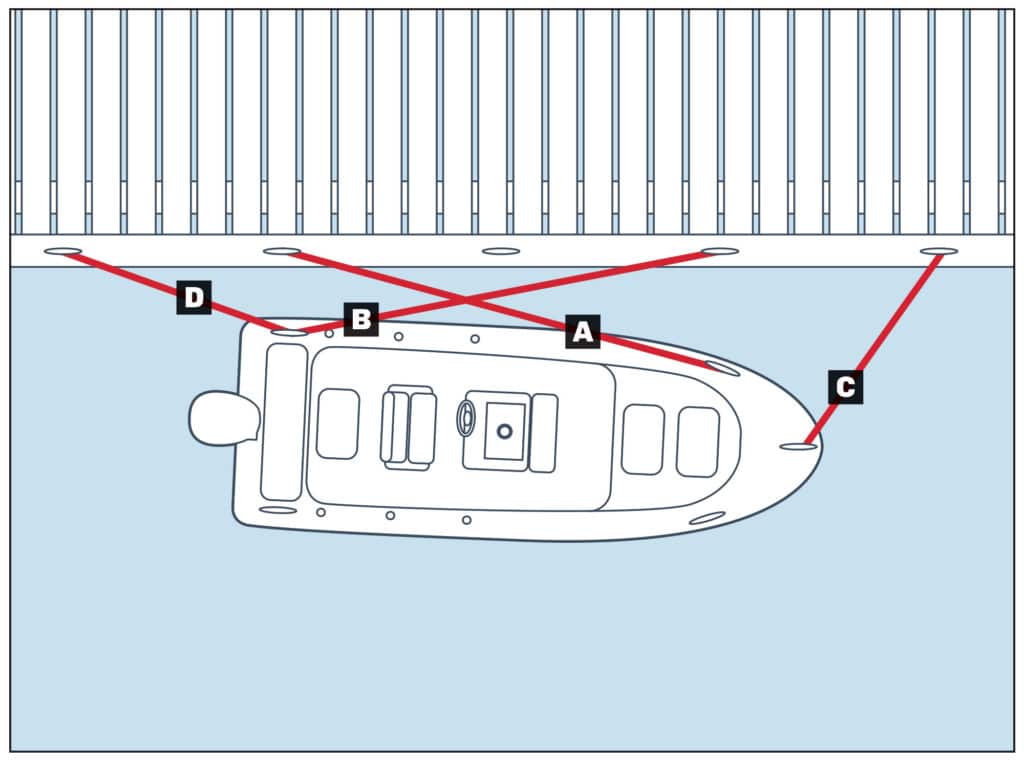
How to Troubleshoot Boat Electronics
Even today’s dependable electronics sometimes malfunction. If a component isn’t working, start by determining if it’s getting power. Check for blown fuses, popped circuit breakers, corroded connections, and broken or burnt wiring. You might even detect an acrid odor. If the boat has duplicate units and the connections are accessible, switch cables to see if the problem follows. Next, read the owner’s manual (you might have to download it or a software update). Most include a troubleshooting matrix to isolate common problems.
